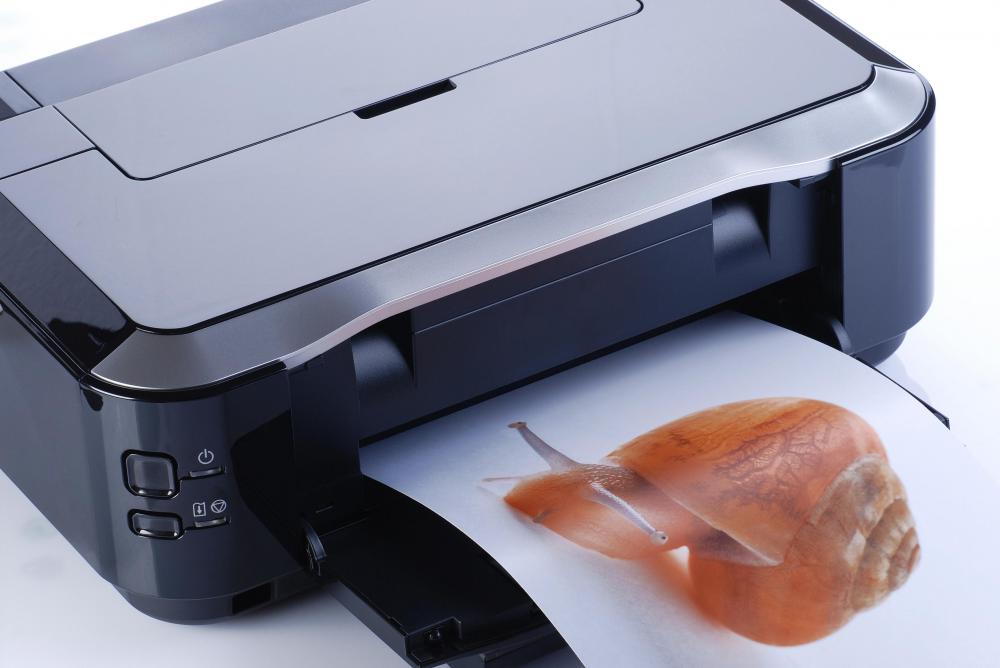At WiseGEEK, we're committed to delivering accurate, trustworthy information. Our expert-authored content is rigorously fact-checked and sourced from credible authorities. Discover how we uphold the highest standards in providing you with reliable knowledge.
What is Full Color Printing?
Full color printing is the process of printing photographs or other documents in the full spectrum of color. It has come a long way as technology continues to advance. In fact, the methods used today are so refined that it is possible to make copies that look just like the original photos.
Color reproduction relies on the theory of three-color vision, which is based on the way the eye sees color. White light, which contains all the wavelengths of visible light, has three primary colors. These colors are red, green, and blue, commonly referred to as RGB in the printing realm. RGB colors are called additive primaries because lights of these three colors produce white light when they are added together. This is the very basic idea behind full color printing.

The process of color separation is just like the process of seeing. The original image is seen using three filters, each corresponding to one of the additive primaries. In other words, humans basically see in layers. In the process of distinguishing colors, those layers are separate yet together at the same time.
The process used in full color printing is the same way photography works. A red filter is placed over the camera or special lens in order to produce a negative of all the red light. When a positive print is made, there are blue and green areas left. This process leaves the color cyan. A green filter produces a positive of the other additive colors, which are red and blue. This process results in a magenta color. A blue filter leaves red and green to produce a yellow positive.
The three colors created during this full color printing process are called subtractive primaries, because each represents two additive primaries. This is, of course, after one of the additive primaries has been subtracted from white light. Color printing presses use color inks that act as filters. These filters subtract portions of white light and strike the image on paper in order to produce other colors. Printing inks are actually transparent, which allows light to pass through to and reflect off of the paper base.
When the three subtractive primaries are combined, the reproduction of the original item will be blurry. This is caused by the pigmentation of the inks. In order to fix this problem a fourth color, black, is added to the mix. This adds shadow and contrast to the image and eliminates the blurriness.
The use of color in full color printing has been shown to increase readership and information retention in publications. According to the National Advertising Association, studies in a major publication revealed the use of color increased readership by 40% or more.
AS FEATURED ON:
AS FEATURED ON:











Discussion Comments
I remember when color printers first hit the home market. They were incredibly expensive, and the cartridges were, too. Now, the cartridges are still pricey, but you can get a decent all-in-one printer for next to nothing.
When photo printers hit, it was really a big deal. I know how thrilled people were that they didn't have to depend on the drugstore or some other place to do their prints; they could print their own pictures. And photo paper is affordable now, so it's been a good innovation.
It’s even a cinch to print address labels and even wedding invitations at home with a color printer.
Post your comments